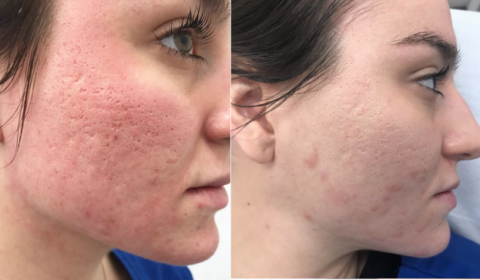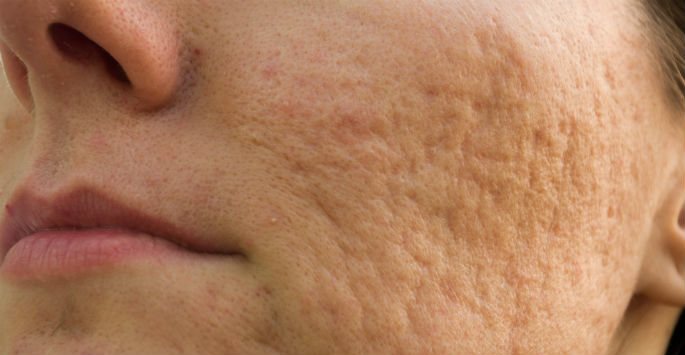Checking Out Skin Disease: Determining and Dealing With Acne Scars for Healthier Skin
Acne scars stand for a significant problem for individuals seeking to maintain healthy and balanced skin, as they can influence both appearance and self-worth. Recognizing the numerous kinds of marks, from atrophic to hypertrophic, is essential for establishing ideal therapy choices. While professional treatments like chemical peels and microneedling can be efficient, the importance of individualized care strategies can not be overemphasized. Furthermore, preventative measures play a crucial duty in lessening future scarring. As we discover these aspects, one should consider exactly how the right technique can bring about transformative results.
Understanding Acne Marks
Recognizing acne scars is vital for anyone who has experienced serious acne, as these marks can have a long-term impact on both physical look and emotional well-being. When the skin undertakes inflammatory actions throughout active acne lesions, acne marks create. The intensity of scarring is typically affected by elements such as the sort of acne, its period, and specific skin attributes.
The body's natural recovery process can cause either atrophic scars, which look like anxieties in the skin, or hypertrophic marks, which are raised and result from overflow of collagen. In addition, the psychological toll of acne marks should not be underestimated; lots of people report sensations of embarrassment, stress and anxiety, and reduced self-confidence. This psychological problem can impact social communications and general lifestyle.
Resolving acne marks calls for a thorough understanding of their development and influence. Recognition of the capacity for long-lasting repercussions linked with unattended marks can encourage individuals to seek proper therapies. Early treatment and effective monitoring strategies can substantially boost skin appearance and improve emotional resilience, highlighting the value of understanding the complexities bordering acne scars.
Types of Acne Scars
Acne marks can be classified right into unique types, each displaying distinct attributes and needing particular treatment strategies. The key sorts of acne marks include atrophic, hypertrophic, and keloid scars.

Hypertrophic scars, in contrast, are increased over the skin degree and are the result of extreme collagen manufacturing throughout the healing process. They typically remain within the limits of the initial acne sore. Keloid marks are comparable yet extend beyond the original injury site, developing bigger, raised areas that can be excruciating or itchy.
Comprehending these sorts of marks is essential for selecting proper therapy alternatives. Various marks may respond far better to specific therapies, such as laser treatments, fillers, or surgical treatments, stressing the importance of a customized approach to acne mark management.
Identifying Your Marks
When evaluating the appearance of your skin, it is important to precisely identify the sort of marks existing, as this will certainly notify one of the most efficient treatment technique. Acne scars generally drop right into 2 groups: atrophic and hypertrophic scars. Atrophic marks, which are one of the most usual, look like anxieties or imprints on the skin. These can additionally be identified right into ice-pick marks, boxcar marks, and rolling marks, each showing distinctive characteristics and calling for various strategies for evaluation.
Hypertrophic marks, on the other hand, are increased and take place because of excessive collagen manufacturing during the healing process. Acknowledging the specific features of your scars-- such as size, structure, and deepness-- is essential for appropriate recognition. Furthermore, take into consideration the distribution of marks across your skin, as this can indicate the extent and period of the acne condition.
Engaging with a dermatologist can offer beneficial insights into the nature of your marks, assisting in the differentiation in between numerous types. A detailed understanding of your scars will inevitably lead to a much more customized and effective treatment strategy, ensuring a clearer and much healthier complexion.
Treatment Alternatives Available
Determining the specific sort of acne marks existing on your skin lays the groundwork for checking out reliable therapy choices. Usual kinds of acne scars consist of atrophic (clinically depressed), hypertrophic (elevated), and post-inflammatory erythema.
For atrophic scars, choices such as chemical peels, microneedling, and laser resurfacing are commonly used. Chemical peels utilize acids to remove the outer layer of skin, advertising brand-new cell development.
Hypertrophic marks can be treated with corticosteroid injections to flatten the mark or laser treatment to reduce redness and improve look. acne scars. Silicone gel sheets and stress dressings might likewise assist in managing elevated marks
Additionally, dermal fillers can temporarily fill in depressions from atrophic marks, while visit this page medical excision might be ideal for severe instances. Each therapy alternative has its advantages and considerations, making it crucial to talk to a skin doctor. They can offer individualized recommendations based on the kind and intensity of your scars, along with your skin kind and overall wellness.
Tips for Prevention
Effective prevention approaches can dramatically minimize the likelihood of creating acne scars. The primary step is to maintain a regular skincare routine that consists of gentle cleaning, peeling, and moisturizing. Utilizing non-comedogenic products aids prevent stopped up pores, which can aggravate acne. In addition, integrating topical treatments containing salicylic acid or benzoyl peroxide can successfully decrease and manage outbreaks swelling.
Staying clear of need to pick or pop acne lesions is critical, as this can result in much deeper skin useful source damages and increase the risk of scarring. Instead, take into consideration using a chilly compress or non-prescription therapies to decrease swelling and soreness.
Sunlight security is an additional important facet of avoidance; ultraviolet (UV) rays can dim scars and impede the recovery procedure. Using a broad-spectrum sunscreen with a minimum of SPF 30 daily can shield the skin and promote even healing.
Last but not least, preserving a balanced diet regimen rich in antioxidants, vitamins, and minerals sustains skin wellness and recovery. Remaining moisturized and handling stress levels can additionally play a significant function in reducing acne flare-ups. By carrying out these strategies, individuals can dramatically reduce their possibilities of creating acne scars.

Conclusion
In conclusion, understanding and identifying acne marks is crucial for efficient treatment and achieving much healthier skin. Different types of acne scars, consisting of atrophic and hypertrophic scars, demand certain interventions tailored to specific requirements.
The body's natural recovery process can result in either atrophic scars, which show up as anxieties in the skin, or hypertrophic scars, which are elevated and result from overproduction of collagen. They are further separated into 3 subtypes: ice choice scars, boxcar marks, and rolling marks. Acne marks generally drop into 2 groups: atrophic and hypertrophic scars. These can better be categorized into ice-pick marks, boxcar scars, and rolling scars, each displaying distinct features and needing different techniques for assessment.
Numerous types of my website acne marks, including hypertrophic and atrophic scars, require specific treatments customized to private needs.